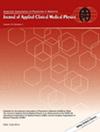Assessing population-based to personalized planning strategies for head and neck adaptive radiotherapy
Abstract
Purpose
Optimal head-and-neck cancer (HNC) treatment planning requires accurate and feasible planning goals to meet dosimetric constraints and generate robust online adaptive treatment plans. A new x-ray-based adaptive radiotherapy (ART) treatment planning system (TPS) version 2.0 emulator includes novel methods to drive the planning process including the revised intelligent optimization engine algorithm (IOE2). HNC is among the most challenging and complex sites and heavily depends on planner skill and experience to successfully generate a reference plan. Therefore, we evaluate the new TPS performance via conventionally accepted planning strategies with/without artificial intelligence (AI) and knowledge-based planning (KBP).
Methods
Our institution has a pre-clinical release of the Varian Ethos2.0 TPS emulator which includes several changes that may affect current planning strategies. Twenty definitive and post-operative HNC patients were retrospectively selected with a two or three-level simultaneous integrated boost (SIB) dosing scheme. Patients were replanned in the emulator using population-based, KBP-guided with/without human intervention and AI-guided planning goals. These planning strategies were compared both dosimetrically and for plan deliverability.
Results
All strategies generally demonstrated acceptable plan quality with KBP- and AI-guided goals offering enhanced dosimetric sparing in organs-at-risk (OAR). The average contralateral parotid gland mean dose was 20.0 ± 6.1 Gy (p < 0.001) for population-based and 15.0 ± 6.1 Gy (p = n.s.) for KBP-with human intervention versus 15.1 ± 7.4 Gy for clinical plans. Target coverage, minimum dose, and plan hotspot were acceptable in all cases. KBP-enabled strategy demonstrated higher modulation and faster optimization time than both population-based and AI-guided strategies.
Conclusion
Simply entering population, automatic KBP-enabled or AI-generated planning goals into the new Ethos2.0 TPS produced dosimetrically compliant plans, with AI-guided goals demonstrating the most OAR sparing. Several of these approaches are easy to translate to other treatment sites and will help lower the barrier to entry for x-ray-based online-ART.


 求助内容:
求助内容: 应助结果提醒方式:
应助结果提醒方式:


